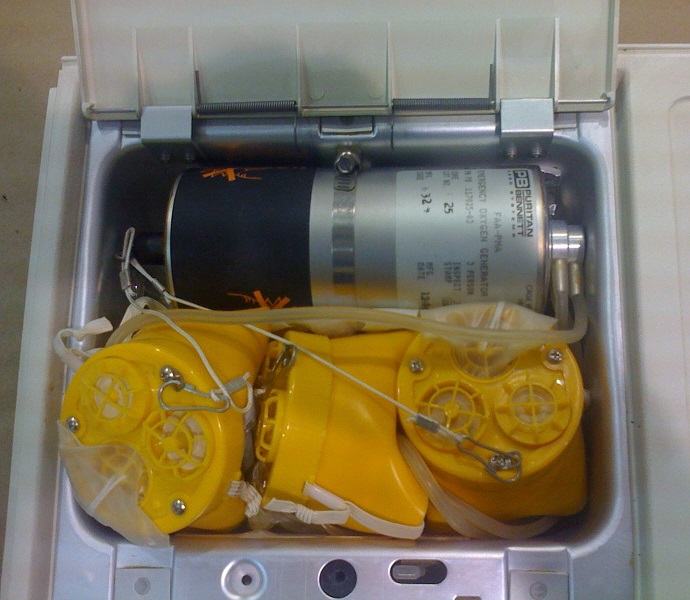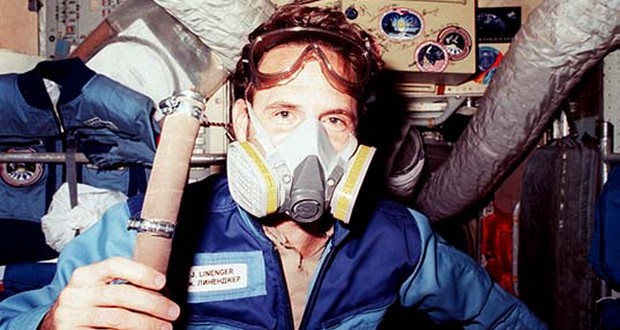It is known that there is no “top” and “bottom” in space, and in general many things there look completely different. For example, we are used to the fact that a candle emits light when burning and absorbs oxygen from the air, releasing carbon dioxide. And on spacecraft and orbital stations there is always a supply of amazing candles burning without light, but with the release of oxygen.

Of all the substances that we constantly encounter, oxygen is the most reactive. This is due to the structure of its diatomic molecule. More than two billion years ago, it caused a global ecological catastrophe. At first, it was just a by-product of the vital activity of the first photosynthetic cells and gradually accumulated in the atmosphere. When its concentration reached 2%, a mass extinction of living organisms began, for which oxygen turned out to be poison. But some organisms have managed to adapt to it and continue their evolution. Now we cannot imagine life without this gas.
In the beginning there was aviation
The minimum air pressure at which most people remain conscious and can perform meaningful actions is 0.47 bar. Such pressure is observed at an altitude of about 6 km above sea level. However, it should be remembered that there is only 21% oxygen in the air. If you breathe pure oxygen, its pressure can be reduced to about 0.15 bar. This was used by the pilots of the first high-altitude aircraft with leaky cabins — they took with them the vital gas in compressed form in cylinders, from where it was fed into oxygen masks.
Such a scheme could only work for the life support of small crews. On modern passenger airliners carrying hundreds of passengers, the problem was solved by creating the most airtight hull. By pumping air from the external environment (pressurization), a pressure of at least 0.7 bar is maintained there. In case of depressurization of the aircraft, all passengers and crew members are provided with oxygen masks. Only gas is supplied to them not from heavy steel cylinders, but from special chemical generators. They start working when ignited by a pyrotechnic capsule or a spark from a piezoelectric element and emit oxygen for about 20 minutes. During this time, the aircraft should descend to a relatively safe altitude of 4 km.

Currently, oxygen generators are manufactured from sodium chlorate NaClO₃ with the addition of small amounts of barium peroxide BaO₂ and potassium perchlorate KClO₄. After ignition, a self-sustaining exothermic reaction begins in such a mixture, proceeding at a temperature of 260 °C. The products of its “combustion” need to be additionally cleaned of toxic barium oxide and cooled. Therefore, when the issue of emergency oxygen supply to space flight participants arose, another solution was chosen.
From airplane to spacecraft
Peroxides — compounds in which there are more oxygen atoms per metal atom than are “supposed” according to its valence — are already used in the first manned spacecraft. They gradually react with water vapor and carbon dioxide from the air, absorbing them and releasing oxygen in return. All this worked fine while the spacecraft with a small internal volume went into orbit. But already during the Apollo missions, it became clear that sometimes there was a need to quickly “deliver” an additional amount of oxygen to a certain place. The fact is that in zero gravity, mixing of air in a confined space occurs much slower than in terrestrial conditions. Therefore, its composition at different points of the spacecraft or orbital station may vary greatly.
This became especially critical at the Soviet/Russian Mir station, which consisted of many compartments. Some of them simply could not be effectively “ventilated”, and the astronauts, going there, specially took with them chemical oxygen sources. They were called “Wiki” and consisted of lithium perchlorate LiClO₄ with a small addition of fine iron powder. When they “combusted”, the temperature rose to 600 °C, due to which a large volume of gas was quickly released. This also made it possible to save on the delivery of compressed oxygen in cylinders from the Earth. Therefore, the “Wiki” at the station was burned quite often.

The disadvantage of such sources was their flammability. If there were inclusions of organic substances in the mixture or just a too dense clot of iron powder, the “candle” naturally lit up. The most unpleasant of such incidents occurred in February 1997 while working in the Kvant module. Unexpectedly for the astronauts, “Wiki” turned into a small torch, which began to fly around the orbital station, splashing molten metal. It was hardly possible to avoid a massive fire and evacuation of the Mir station.
Similar oxygen generators are available on the ISS. They are designated by the abbreviation SFOG. In order to avoid dangerous situations, their manufacture is carefully controlled, and their use is prescribed only in extreme cases. In addition, some changes have been made to the composition of the “oxygen candles”, thanks to which they now “burn” at a temperature of less than 500 °C.
Follow us on Twitter to get the most interesting space news in time
https://twitter.com/ust_magazine
